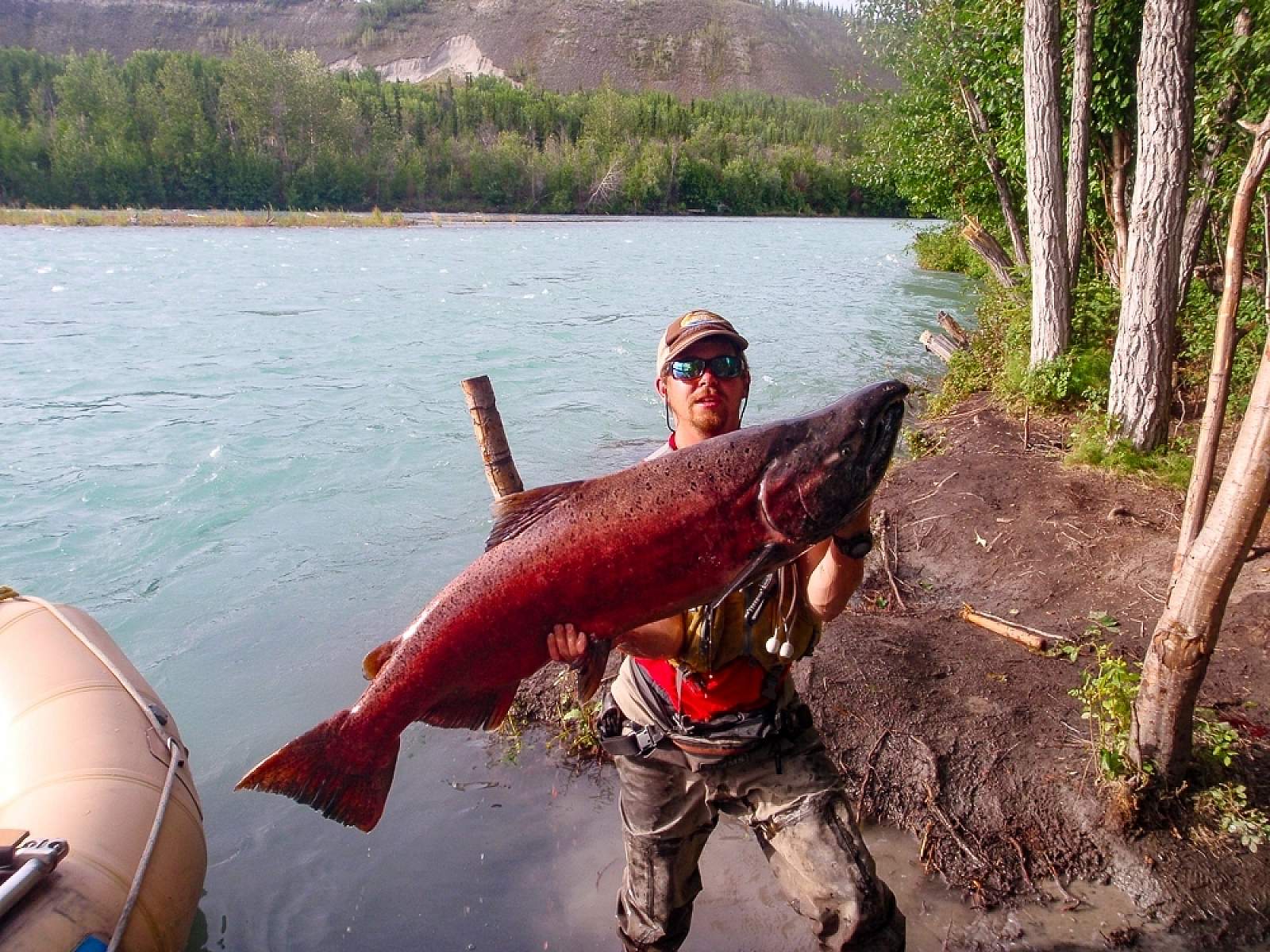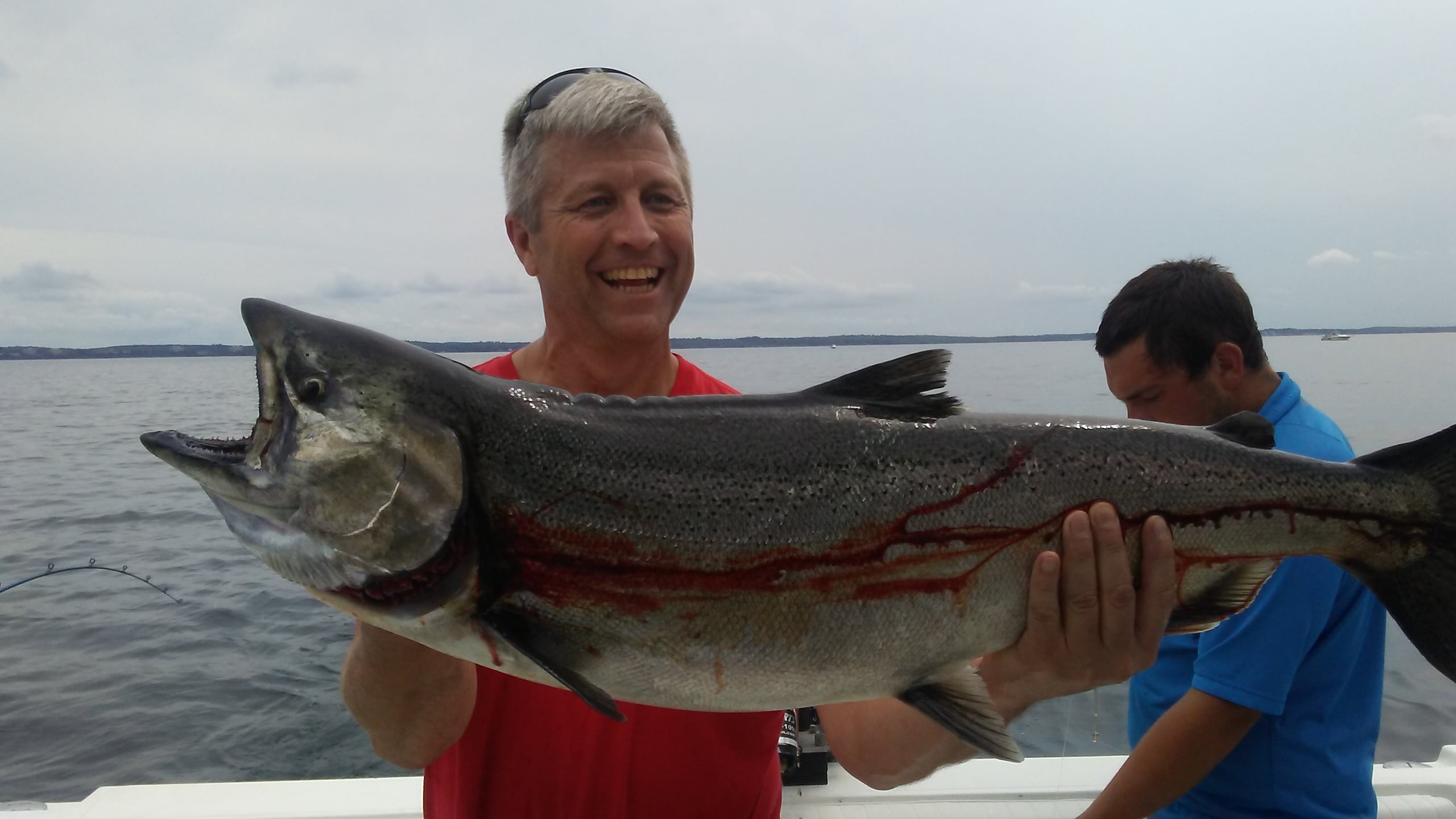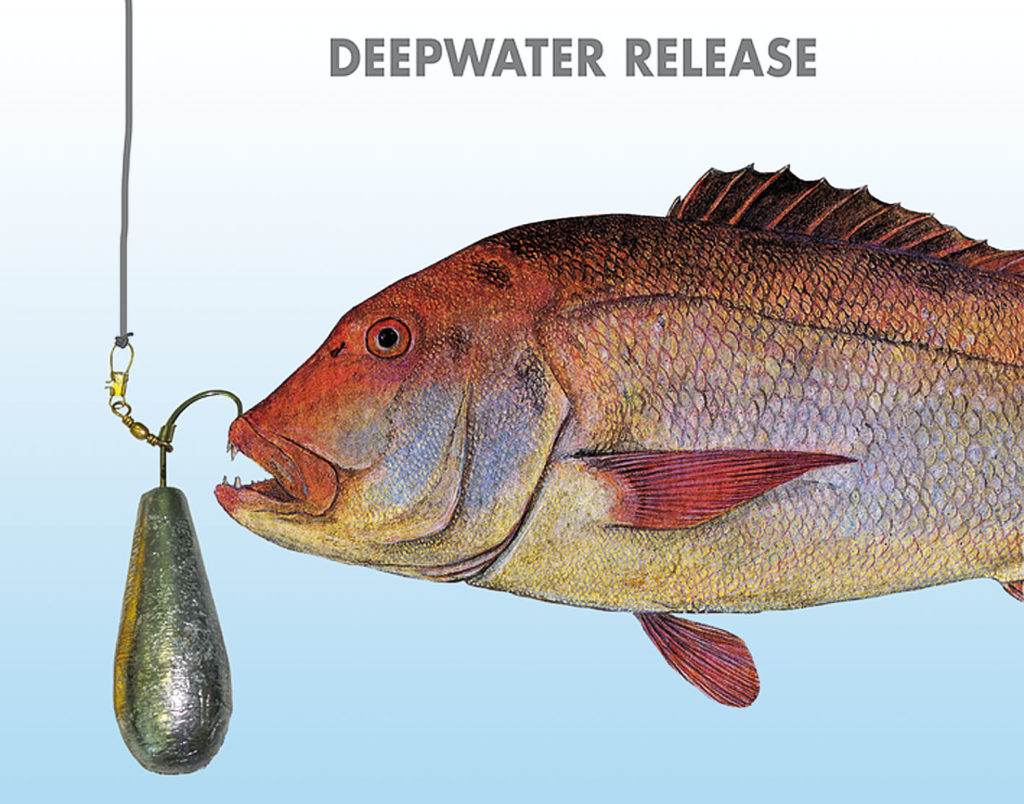
Are you ready to delve into an exciting new activity that combines patience, skill and love for the outdoors? We welcome you to the world of copper fishing!
Copper fishing is not your typical pastime. This unique and engaging hobby takes the traditional joy of fishing and raises it to new, unexpected levels. Be warned, once you start, you may find it impossible to stop!
Whether you’re an experienced angler or new to the fishing world, our comprehensive guide to copper fishing will equip you with everything you need to get started. Don’t miss out on the fun and excitement that awaits!
The Unique Benefits of Copper Fishing
Copper fishing is a tradition that dates back for many centuries, revered by expert fishermen for its significant advantages. This traditional method boasts several unique benefits that are yet to be explored by most. Let’s go through some of them:
- Greater Durability: The first and foremost benefit of copper fishing gear is its unparalleled durability. Copper, as a material, is more able to withstand harsh marine conditions and still perform optimally.
- Better Castability: Copper fishing allows for better castability. This is due to the denser nature of copper, which gives it a greater casting range than other comparable materials.
- Leads to Larger Catches: Copper fishing generally leads to larger catches. This is because copper lines are less visible underwater, making the fish less cautious and therefore more likely to bite.
- Improved Eco-Friendliness: When compared to other fishing materials, copper is more eco-friendly. It does not decompose into harmful substances and does not pose a threat to marine life if lost at sea.
- Longer Equipment Life: Due to its incredible durability, copper fishing gear tend to have a longer lifespan compared to other materials. This translates into reduced gear replacement costs in the long run.
Copper fishing, thus, stands as an excellent choice for both avid and novice fishermen. It combines age-old tradition with efficiency, making your fishing experience seamless and fruitful. With copper fishing, you can look forward to both the journey and the catch.
Essential Gear for Copper Fishing

Copper fishing, as exciting as it is, requires a unique set of gear for optimal results. Here, we break down the essentials you’d need for a successful trip.
Rods
A good quality rod is one of the most essential pieces of equipment you would require for copper fishing. Choose a rod with the right flex and strength to handle the copper fish’s weight and power.
- Lightweight Rods: These are designed for small copper fishes and are quite flexible.
- Medium-weight Rods: These are perfect for mid-size copper fishes as they carry a decent amount of strength and flexibility.
- Heavyweight Rods: If you’re aiming for the big copper fishes, these are the rods to opt for. They offer sturdiness and power.
Reels
The right reel can make the difference between a successful or an unsuccessful fishing trip. Aim for a reel that aligns perfectly with your fishing rod and can handle the weight of the copper fish.
- Spinning Reels: These are typically easy to use, making them beginner-friendly. They’re ideal for handling light to medium-weight copper fishes.
- Baitcasting Reels: More advanced than spinning reels, these reels offer improved control and precision.
Remember, the right gear can significantly enhance your copper fishing experience. Don’t skimp on your essentials; treat them as valuable investments for future adventures.
Understanding Copper Fish Species
When it comes to fishing, knowledge about fish species is indispensable. This includes understanding copper fish, which are a group of fish found mainly in subtropical and tropical waters. Let’s deep dive into the world of copper fish species.
Characteristics of Copper Fish Species
Copper fish are known for their brilliant coloration, which can range from shades of copper to golden hues. Their unique coloration not only enhances their beauty but also acts as a defensive mechanism against predators. Besides their striking color, copper fish species have an elaborate fin structure, making them one of the highly sought-after species among game fishing enthusiasts.
Copper Fish Species Table
There are various species of copper fish. Below are the most common types:
| Species Name | Average Size | Habitat |
|---|---|---|
| Copper Rockfish | 8-15 inches | North Eastern Pacific Ocean |
| Copperband Butterflyfish | 7-10 inches | Indo-Pacific region |
| Copper Sweep | 12-18 inches | Australia and New Zealand |
While these are only a few examples, there are many more species of copper fish to discover and explore. Each has an unique set of characteristics and behaviors that makes them special for different types of fishing.
That’s why it’s important to understand each copper fish species. The more you know, the more equipped you will be to make the most out of your copper fishing adventure.
Identifying Prime Copper Fishing Locations
When starting out on the thrilling journey of copper fishing, one of the first things you need is a comprehensive understanding of the prime locations for this activity. Copper fish predominantly inhabit certain bodies of water and pinpointing these areas can greatly boost your fishing success.
Let’s walk through some of the best areas for copper fishing.
Inland Freshwater Bodies
Copper fishes are adaptable to freshwater, making lakes, streams and reservoirs prime locations for fishing. But, remember to look out for these specifics:
- Lakes with rocky bottoms, especially those with a copper-toned seabed.
- Streams and rivers with high mineral content, as copper fishes thrive in such conditions.
- Large bodies of water with a substantial fish population, enhancing the likelihood of copper fish existence.
Coastal Areas
Costal areas are also prime copper fish locations. Focus on areas with high copper deposits, as together with the saltwater, create the perfect habitat for these species.
- Coastal waters around mining areas with high copper sedimentation.
- Reefs- Copper fish also thrive in salt waters with reef-like conditions.
- Estuaries – The brackish water condition is ideal for copper fish who love a mix of freshwater and saltwater environment.
In conclusion, understanding prime copper fishing locations is vital in maximizing your fishing yield. Remember, these locations can widely vary. The trick is to keep exploring, and in the process, discover exciting new copper fishing spots.
Mastering Casting Techniques in Copper Fishing
The art of fishing is as old as civilization itself but mastering various casting techniques to optimize your copper fishing is a rather exhilarating yet challenging journey. Most Anglers agree that casting is not just about throwing a fishing line into the water. It involves precision, timing and understanding the fish and its habitat.
Understand Your Environment
Fishing conditions rarely remain the same. Weather changes, water currents, and even the time of day can affect your casting technique. A successful Angler becomes one with the environment, understanding how these changing conditions impact the fish and their behavior. This understanding gives Anglers an edge when it comes to choosing the perfect casting technique.
Perfect Your Timing
Your casting technique greatly depends on your timing. It is advisable to practice your casting, get used to the weight of your lures, and understand the concept of loading and unloading your fishing rod. Mastering these techniques will allow you to cast further and with more accuracy, enhancing your entire fishing experience.
Remember, patience is key in copper fishing. The more you practice and understand these techniques, the more chances you have to become a master Angler. It’s an exciting world out there, waiting for you to conquer it with your copper line.
Navigating Safety in Copper Fishing
In the world of Copper Fishing, safety should never be compromised. Here, we guide you through the essential safety practices that every angler should be aware of:
- Familiarize Yourself with your Equipment: Completing your Copper Fishing journey without understanding the potential risks of your tools is a recipe for disaster. Ensure you are well-acquainted with every piece of equipment, its proper use and emergency procedures in case of failure.
- Personal Protective Equipment: Always remember, your safety gear is as important as your fishing gear. Quality gloves, boots, and other protective clothing may seem expensive, but your well-being is priceless.
- Keep Watch of the Weather: Mother Nature plays a significant role in any outdoor activity, Copper Fishing is no exception. Always check the weather forecasts before embarking on your fishing adventure and adjust your travel and fishing plans accordingly.
- Ensure Communication: If venturing far from the coast or fishing alone, always make sure someone is aware of your location. Keeping communication tools such as a cell phone or radio can be a lifesaver in emergent situations.
- First Aid Skills: Equip yourself not only with a First Aid Kit but also with the knowledge to use it properly. Learning basic first aid techniques and CPR can make a huge difference in emergency situations.
Last but not the least, always remember the motto of the smart angler – safety first, fun second. Happy Copper Fishing!
Tips for Increasing Your Copper Catch
If you’ve embarked on the adventure of copper fishing, you’ve likely discovered the thrill of unearthing these valuable commodities. With copper prices at record highs, your fishing just got more profitable. Below are some tips to help increase your copper catch.
1. Use the Right Equipment
Having the right equipment can significantly improve your chances of finding copper. While it might be tempting to use any old metal detector, some are designed specifically for finding certain types of metals, including copper. Using a metal detector that’s tuned to find copper can help you save time and energy in the long run.
- Look for metal detectors that feature discrimination or notch control settings. These settings enable you to focus on specific types of items, such as coins or metals like copper, thus filtering out unwanted metals.
- Equip a smaller coil on your detector. Smaller coils have greater sensitivity to smaller pieces of copper.
2. Research Your Location
There’s no point in spending hours copper fishing in a spot devoid of copper. Do some research on the area you plan to visit before you go. Topographical maps, old mining guides, and geological survey reports can all provide valuable information about where copper deposits might be located.
- Get familiar with the geographical features that often accompany copper deposits. For instance, copper is often found in areas with malachite, which is a green, copper-based mineral.
- Contact local mining clubs, historical societies, or geology departments at universities. These organizations can provide valuable insights about the best locations for copper fishing.
3. Follow Best Practices
Once you’re on the fishing site with the right equipment, it’s crucial to follow best practices to maximize your efficiency in finding copper.
- Be systematic with your searches. Start from one end and work your way across, making sure to cover the whole area thoroughly.
- Walk slowly and deliberately when swinging your metal detector, to increase its efficiency in detecting copper pieces.
Armed with these tips, you’re now better prepared for successful copper fishing. Happy hunting!
Role of Weather & Seasons in Copper Fishing
The ability to understand the influence of weather and seasons on copper fishing is vital to its success. These factors significantly determine the behavior of the fish, their feeding patterns, and their habitat. Let’s delve into the reasons why weather and seasons play such a significant role.
Impact of Weather Conditions
- Temperature: Fish are ectothermic animals, which means their body temperature is regulated by the surrounding environment. Copper fish prefers cooler water temperatures, making them more active during early morning or late evening.
- Barometric Pressure: Fish are very sensitive to changes in barometric pressure. When the pressure drops rapidly, indicating an incoming storm, fish will usually feed heavily in anticipation of needing to lay low during the poor weather.
- Light Levels: The availability of light can influence the feeding habits of fish. On bright, sunny days, fish tend to be deeper in the water and harder to catch. Overcast days can lead to more successful fishing experiences.
Influence of Seasons

Sometimes, the type of fish you can catch, or indeed, the success of your fishing endeavor can depend on the season.
- Spring: Spring is the spawning season for many species. Fish would be moving towards shallower waters to lay eggs, leading to increased activity and higher chances of catch.
- Summer: Fish tend to seek cooler waters to beat the heat in summers. The middle of the day can be a challenging time to fish, but the chances improve in the early morning or late evening.
- Autumn: This is a great time for fishing as fish feed aggressively in preparation for winter. The moderate temperatures make autumn a comfortable season for fishing.
- Winter: In winter, fish are less active and stay in deeper waters. Ice fishing becomes a popular alternative for those looking to continue their fishing activities in copper fishing during this time.
In conclusion, understanding these weather and seasonal trends can greatly improve your copper fishing experiences and success rates.
Preserving and Cleaning Your Copper Catch
Once you have successfully found your copper, it’s crucial to properly preserve and clean your catch to ensure that it retains its beauty and value. Here we provide a step by step guide on how to do so.
Preserving Your Copper Catch
- Freshly caught copper should be stored in a cool, dry place. Avoid places with high temperature or humidity, as it can react with the copper and cause corrosion.
- Use acid-free tissue paper or soft cloth to wrap your copper pieces. This helps to avoid any scratches or other physical damage.
- Avoid stacking or crushing your copper to prevent any deformation or breakage. Store each piece separately if possible.
Cleaning Your Copper Catch
- The first step in cleaning your copper is to gently remove any loose dirt or dust using a soft brush or cloth. Try to avoid any harsh scrubbing that might damage the surface.
- For a deeper clean, you can use a solution of warm water and a gentle, non-abrasive soap or detergent. Be sure to thoroughly rinse and dry the copper piece afterwards to avoid any water spots or potential tarnish.
- If your copper catch has any tarnish or more stubborn dirt, you can use a specialized copper cleaner. Ensure to follow the instructions on the product label and use it in a well-ventilated area.
By following these steps, you can not only maximize the lifespan of your copper catch but also keep it in a beautiful and pristine condition. Learn more in this exciting world of copper fishing!
Question-answer:
What type of content should I expect in the book “Discover the Exciting World of Copper Fishing: A Comprehensive Guide”?
“Discover the Exciting World of Copper Fishing: A Comprehensive Guide” provides comprehensive information about copper fishing techniques, the history and evolution of copper fishing, and the types of tools and equipment used. Additionally, it contains detailed illustrations and step-by-step instructions on how to effectively use different types of copper fishing gear. The book also focuses on safety practices and eco-friendly fishing methods.
Is this book suitable for beginners in copper fishing?
Yes, the book “Discover the Exciting World of Copper Fishing: A Comprehensive Guide” is designed to cater to all skill levels including beginners. It starts with the basic concepts and gradually moves on to more advanced techniques. This makes it a great resource for those who are just starting their journey in the world of copper fishing.
How practical is “Discover the Exciting World of Copper Fishing: A Comprehensive Guide”? Can I apply what I learn right away?
Indeed, the book is filled with practical knowledge and tips. You can apply it directly to your fishing experiences. It provides step-by-step procedures, beneficial tips and tricks, and also includes troubleshooting guidelines for common challenges you might face in copper fishing. So, it’s not just theoretical, but highly practical as well.
Can the knowledge from the “Discover the Exciting World of Copper Fishing: A Comprehensive Guide” be applied to other types of fishing?
While the book primarily focuses on copper fishing, many of the principles, techniques and safety precautions discussed can be applied to other types of fishing as well. The knowledge of baiting, understanding the behavior of fish, and respecting the environment, for example, are applicable in any fishing practice.
Does “Discover the Exciting World of Copper Fishing” include visuals and graphics to aid understanding?
Yes, the book includes several visuals, diagrams, and illustrations to explain the techniques and tools used in copper fishing. These aids make it easier for readers to understand the content, especially those who are visual learners.
Is this guide suitable for a beginner in copper fishing? Do I need to have prior knowledge or experience in fishing?
The “Discover the Exciting World of Copper Fishing: A Comprehensive Guide” is designed for all skill levels. Whether you are a seasoned pro or just starting out, this guide will take you through the intricacies of copper fishing step-by-step. While prior knowledge of fishing could be beneficial, it is not necessary. The guide is quite comprehensive with its beginner-friendly instructions and detailed graphics. It delves into various aspects of copper fishing, including gear selection, techniques, tips for improving your catch, and safety precautions. Even if you have never held a fishing rod before, by the end of this guide, you’ll be well versed in the art of copper fishing.